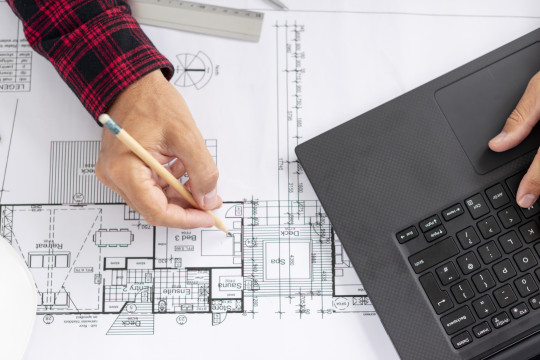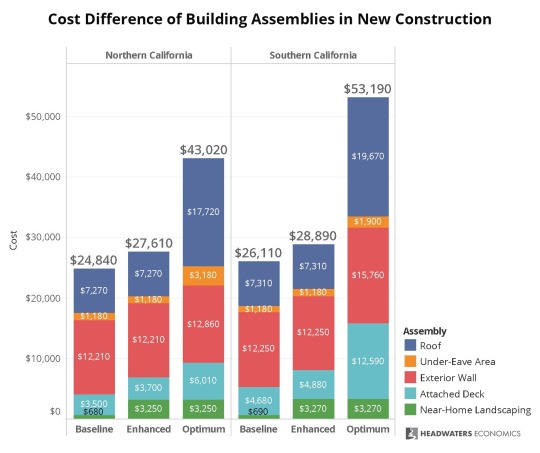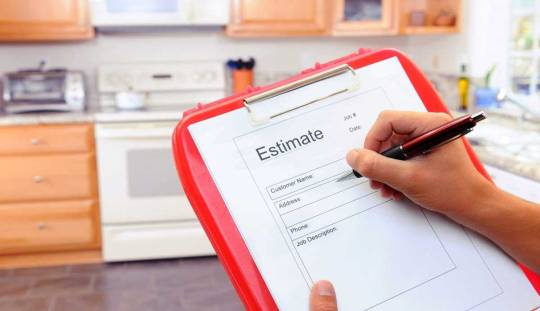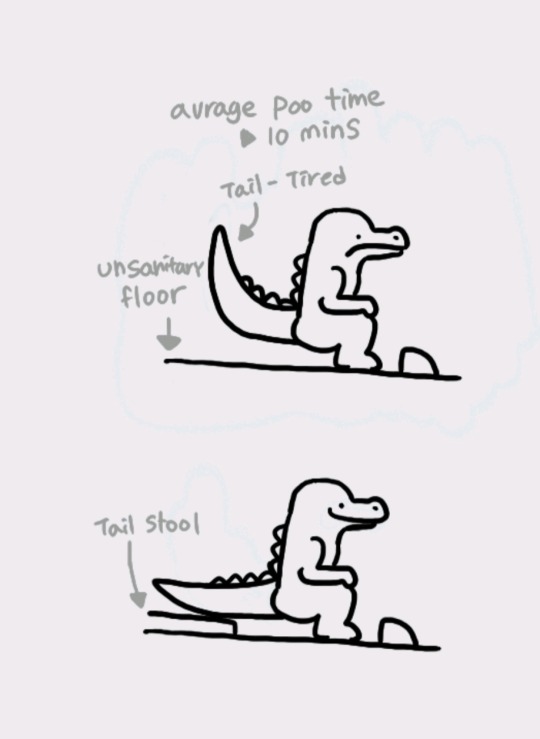#construction cost
Explore tagged Tumblr posts
Text
Step-by-Step Guide: How to Estimate Construction Costs for a New Home

Accurately estimating construction costs is essential when planning to build your dream home. Understanding and calculating these expenses helps in making informed financial decisions and avoiding unexpected surprises. Here’s a detailed, step-by-step guide on how to perform a thorough construction cost estimate for your new home.
If You Need more Information about cost Estimations, visit this Website -> https://uniqueestimations.com/new-york-construction-estimating-services/
1. Understand the Types of Construction Cost Estimates
There are different methods for estimating costs depending on the stage of your construction project:
Preliminary Estimate: An early-stage estimate based on basic information.
Detailed Estimate: Involves itemized costs for materials, labor, permits, and more.
Bid Estimate: Prepared by contractors and includes detailed pricing for project execution.
Selecting the right construction cost estimator for your project depends on your project’s complexity and accuracy needs.
2. Define the Scope of Your Project
To start estimating, it’s important to clearly outline:
Square Footage: Determine the size of the home.
Design Complexity: Architectural style and special features add complexity and cost.
Quality of Materials: Decide between budget, standard, or high-end finishes.
Having a well-defined project scope ensures that your cost estimation in construction is accurate and reliable.
3. Calculate Material Costs
Material costs often constitute a significant portion of new construction estimating costs. Factors to consider include:
Foundation Materials: Concrete, steel reinforcements, and formwork.
Structural Components: Wood, steel, or concrete framing.
Exterior Finishes: Siding, roofing materials, and insulation.
Interior Finishes: Flooring, drywall, cabinetry, and paint.
Consulting local suppliers and utilizing a construction cost estimator can help you get current pricing.
4. Account for Labor Costs
Labor expenses can vary widely based on your location, the size of your project, and the expertise required. Common roles involved include:
General Contractors: Manage the entire construction project.
Specialized Contractors: Focus on plumbing, electrical work, and HVAC installation.
Skilled Laborers: Carpenters, masons, and roofers.
Make sure to factor in wages, benefits, and potential overtime when estimating construction costs for labor.
5. Include Permits and Legal Fees
Local regulations often require permits for various aspects of home construction, including:
Building permits
Plumbing and electrical permits
Environmental impact assessments
Research the requirements in your area and budget accordingly to avoid delays or fines.
6. Don’t Forget About Utility and Site Preparation Costs
These expenses cover tasks that prepare the land for construction and ensure the home is connected to essential services:
Site Clearing and Excavation: Removing vegetation and leveling the site.
Utility Hookups: Connecting water, sewer, gas, and electricity to the property.
Driveway and Landscaping: Installing access roads and outdoor spaces.
Including these in your construction estimating costs ensures you capture the full scope of expenses.
7. Estimate Plumbing and Electrical Costs
Specialty work like plumbing and electrical installations requires detailed estimates. Utilize a new construction plumbing cost estimator to calculate the expenses for:
Plumbing: Pipes, fittings, and fixtures for kitchens, bathrooms, and outdoor areas.
Electrical Systems: Wiring, outlets, switches, and lighting installations.
These components are critical to home functionality and should be accurately budgeted.
8. Factor in Contingency Costs
Unexpected expenses often arise during construction. To mitigate financial strain, allocate:
5% to 15% of Total Budget: For unanticipated changes or issues.
Price Fluctuations: For materials and labor due to market conditions.
Including a contingency buffer is essential for realistic cost estimation in construction.
9. Use Construction Cost Estimating Tools
Modern technology makes it easier to get accurate estimates with tools such as:
Online Construction Estimators: Provide quick preliminary cost insights.
Software Programs: Offer detailed and customizable reports.
Professional Services: Hiring a professional estimator can add precision and expertise.
Selecting the right tool depends on your project’s complexity and your need for accuracy.
10. Review and Adjust Your Estimate Regularly
As your project progresses, costs may change. Continuously updating your estimate ensures that your budget remains accurate and relevant. Factors to reassess include:
Changes in material prices
Design adjustments
Project delays
Regular reviews help maintain control over your estimating construction costs and prevent budget overruns.
Final Thoughts
Accurately estimating construction costs for a new home requires careful planning, detailed calculations, and regular monitoring. By following these steps, you can confidently manage your budget and make informed decisions throughout the construction process.
If you want to read more information about construction cost Estimation Website just visit --> https://uniqueestimations.com/new-york-construction-estimating-services/
#Unique Estimations#Cost Estimation#construction cost#new home cost#resturants cost#construction labor cost estimator#cost estimation for road construction
2 notes
·
View notes
Text
Construction Cost Estimating Service for Residential, Commercial, and Industrial Projects
Construction cost estimating varies significantly across residential, commercial, and industrial projects due to differences in materials, labor requirements, complexity, and regulatory standards. A well-prepared estimate ensures accurate budgeting, prevents cost overruns, and helps stakeholders make informed financial decisions.
This article explores the unique aspects of cost estimating for residential, commercial, and industrial construction projects.
1. Residential Construction Cost Estimating
Residential construction includes single-family homes, townhouses, and apartment buildings. Estimating for these projects focuses on material costs, labor, permits, and site conditions.
Key Factors:
Material Costs: Prices for lumber, roofing, drywall, flooring, and fixtures.
Labor Costs: Wages for carpenters, electricians, plumbers, and other trades.
Site Preparation: Land clearing, excavation, and foundation work.
Permits and Inspections: Compliance with local building codes and zoning laws.
Challenges:
Price fluctuations in lumber and other essential materials.
Variability in labor costs based on location and availability.
Customization factors, such as high-end finishes or energy-efficient upgrades.
2. Commercial Construction Cost Estimating
Commercial projects include office buildings, retail stores, hotels, and restaurants. These estimates require consideration of larger-scale materials, specialized labor, and adherence to commercial building codes.
Key Factors:
Structural Components: Steel framing, concrete foundations, and glass facades.
Mechanical and Electrical Systems: HVAC, fire suppression, elevators, and security systems.
Interior and Exterior Finishes: Flooring, lighting, signage, and parking lots.
Project Timeline: Faster completion may require premium labor rates or overtime costs.
Challenges:
Managing subcontractor costs for specialized trades.
Accounting for commercial permit fees, inspections, and code compliance.
Ensuring accurate contingency planning for unforeseen design changes.
3. Industrial Construction Cost Estimating
Industrial projects include factories, warehouses, power plants, and manufacturing facilities. These projects involve complex systems, heavy-duty materials, and strict regulatory requirements.
Key Factors:
Structural Integrity: Reinforced concrete, steel frameworks, and load-bearing calculations.
Machinery and Equipment Installation: Costs for large-scale production systems and automation.
Environmental and Safety Regulations: Compliance with OSHA, EPA, and industry-specific guidelines.
Infrastructure Needs: Utility connections, waste management, and transport access.
Challenges:
High material costs due to specialized requirements.
Extended timelines with phased construction and operational testing.
Coordination with multiple engineering disciplines.
Comparing Residential, Commercial, and Industrial Estimating
FactorResidentialCommercialIndustrialProject SizeSmall to mediumMedium to largeLarge-scaleComplexityModerateHighVery highRegulationsLocal building codesZoning laws, fire safetyEnvironmental, OSHA, industry-specificMaterials UsedLumber, drywall, roofingSteel, concrete, glassHeavy-duty steel, reinforced concreteCost VariablesCustom finishes, labor costsEquipment, specialized laborMachinery, safety regulations
Final Thoughts
Accurate construction cost estimating is essential for the successful planning and execution of residential, commercial, and industrial projects. Each sector presents unique challenges and cost factors that must be carefully analyzed. Hiring a professional estimating service ensures precise budgeting, helping to avoid unexpected costs and financial setbacks.
#construction cost estimating service in US#construction cost estimating services near me#construction cost estimating service near me#construction cost estimating service#construction cost estimating#commercial estimating#construction estimation#cost control in construction#material cost estimation#commercial estimation#cost estimation#estimating service near me#industrial estimating#cost analysis#labor cost estimation#construction cost
0 notes
Text
#construction cost#construction cost in ahmedabad#interior design cost#builders#ahmedabad#ahmedabad interiors#interior design#interiordecor#interiors#ahmedabad interior designer#interior designer in ahmedabad
0 notes
Text
Construction Costs for a Wildfire-Resistant Home
Increasing home loss and growing risks require reevaluating the wildfire crisis as a home-ignition problem and not a wildland fire problem. A home’s building materials, design, and nearby landscaping influence its survival. Together with the location, arrangement, and placement of nearby homes, constructing a wildfire-resistant home is critical in light of rising wildfire risks. This report…

View On WordPress
0 notes
Text
Top 7 Ways to Reduce Your Construction Costs
Building a new home or undertaking a large construction project is a significant financial commitment. However, with careful planning and smart decisions, you can substantially reduce your construction costs without compromising on quality or safety. Whether you're embarking on a residential project or a commercial build, the key to keeping your budget in check lies in strategic planning, efficient resource management, and hiring the right professionals.
If you’re involved in building construction in Bangalore, where construction expenses can quickly add up, this guide will help you explore practical ways to minimize your costs. Below, we outline the top seven strategies to help you stay within budget while still achieving the construction results you desire.
1. Thorough Planning and Budgeting
The foundation of any cost-effective construction project begins with thorough planning and budgeting. Before breaking ground, take the time to develop a detailed plan that outlines every aspect of the project. This includes:
Design and Layout: Work closely with your architect and contractor to create a design that meets your needs without unnecessary complexities. Simple, straightforward designs are often more cost-effective to build.
Material Selection: Choose materials that offer a good balance between cost, durability, and aesthetics. For example, opting for locally sourced materials can reduce transportation costs.
Labor and Time Estimates: Accurate estimates of labor and time can prevent costly delays. Ensure that your timeline is realistic and that your contractor has accounted for all potential delays.
In Bangalore, where the construction industry is booming, engaging a professional team like TeamHome can be invaluable. They can help you plan your project down to the smallest detail, ensuring that all potential expenses are accounted for upfront, which is essential for keeping your construction costs under control.
2. Choose the Right Contractor
Selecting the right contractor is one of the most critical decisions in any construction project. A skilled and experienced contractor will not only ensure that your project is completed to a high standard but will also help you avoid costly mistakes that can arise from poor workmanship or mismanagement.
When choosing a contractor, consider the following:
Experience and Reputation: Look for a contractor with a strong track record in building construction in Bangalore. A well-established contractor like TeamHome has the experience to navigate local regulations, sourcing, and labor considerations efficiently.
Clear Communication: Ensure that your contractor is transparent and communicates clearly about costs, timelines, and potential challenges. Miscommunication can lead to unexpected expenses and delays.
Competitive Bidding: Obtain multiple bids from different contractors, but be cautious about choosing the lowest bid. Sometimes, lower bids can lead to corners being cut, resulting in higher costs in the long run.
Hiring a reputable contractor can save you money by avoiding costly errors, ensuring efficient work practices, and securing good deals on materials.
3. Optimize Material Use
Material costs are a significant component of overall construction costs, and optimizing material use is a straightforward way to save money. Here’s how you can do it:
Bulk Purchasing: When possible, purchase materials in bulk to take advantage of discounts. For example, buying all the cement, bricks, or steel needed for the entire project at once can lead to significant savings.
Waste Reduction: Work with your contractor to minimize waste. Proper planning and precise measurements can reduce the amount of excess material, which not only saves money but is also more environmentally friendly.
Substitute Materials: Consider using alternative materials that offer similar durability and aesthetics at a lower cost. For example, instead of natural stone, you might use high-quality engineered stone, which can be more affordable.
By optimizing material use, you can reduce the financial impact of material expenses on your construction budget. In a competitive market like Bangalore, working with a knowledgeable contractor who understands local suppliers and material costs, such as TeamHome, can lead to substantial savings.
4. Efficient Project Management
Effective project management is crucial in keeping construction costs down. Delays, miscommunications, and errors during construction can quickly lead to cost overruns. Here are some tips for efficient project management:
Set Clear Milestones: Break down the project into smaller phases with clear milestones and deadlines. This approach helps track progress and ensures that the project stays on schedule.
Regular Updates: Regular meetings and updates between you, the contractor, and any other stakeholders are essential to address any issues that arise and to keep everyone on the same page.
Contingency Planning: While planning your project, include a contingency budget for unexpected expenses. This can prevent financial strain if unforeseen issues arise.
By staying actively involved in the project and ensuring that the contractor manages the site efficiently, you can avoid unnecessary expenses and delays. TeamHome’s expertise in building construction in Bangalore includes strong project management skills, which can help you keep your project on track and within budget.
5. Embrace Sustainable Building Practices
Sustainable building practices are not only good for the environment but can also significantly reduce your construction costs, both in the short and long term. Here’s how:
Energy-Efficient Design: Incorporate energy-efficient features into the design of your building. Proper insulation, energy-efficient windows, and renewable energy sources like solar panels can reduce long-term operational costs.
Water Conservation: Implement water-saving fixtures and rainwater harvesting systems. These features can reduce water bills and make your building more self-sufficient.
Green Building Materials: Use materials that are sustainable and recyclable. Bamboo, reclaimed wood, and recycled steel are examples of eco-friendly materials that can be both cost-effective and durable.
Sustainable construction practices can lead to significant savings over time, especially in energy and water usage. By incorporating these practices into your building construction in Bangalore, with the guidance of experts like TeamHome, you can create a more cost-effective and environmentally friendly structure.
6. DIY Where Possible
Taking on some of the simpler tasks yourself can lead to considerable savings. While not all aspects of construction can be DIY projects, certain elements like painting, landscaping, or even installing certain fixtures can be done without professional help, provided you have the necessary skills.
However, it’s essential to know your limits. DIY can be a double-edged sword—while it can save money, it can also lead to costly mistakes if not done correctly. Always consult with your contractor to determine which tasks are suitable for DIY and which are better left to professionals.
In Bangalore, where labor costs can vary, doing some tasks yourself might reduce overall construction costs. But be sure to weigh the potential savings against the time, effort, and skill required.
7. Utilize Modern Technology
Technology can be a powerful ally in reducing construction costs. From design software to project management tools, modern technology can streamline the construction process and improve accuracy. Here’s how you can leverage technology:
3D Modeling and BIM (Building Information Modeling): These tools allow you to visualize the entire project before construction begins. They help identify potential design issues early, which can prevent costly changes during construction.
Drones and Site Monitoring: Drones can provide real-time updates and aerial views of the construction site, helping to monitor progress and catch any issues early. This can be particularly useful in large projects where manual monitoring would be time-consuming.
Mobile Apps: Many mobile apps can help track expenses, manage schedules, and communicate with contractors in real-time. This ensures that you stay informed and can make decisions quickly, avoiding delays and extra costs.
Integrating technology into your construction costs project can lead to more accurate planning, efficient execution, and cost savings. A contractor experienced in building construction in Bangalore, like TeamHome, can help you utilize the latest technology to streamline your project and reduce costs.
Why Work with a Professional Construction Team?
Building construction in Bangalore is a complex process that requires a deep understanding of local regulations, market conditions, and best practices. Working with a professional construction team like TeamHome offers several benefits:
Local Expertise: TeamHome understands the Bangalore construction market, including local suppliers, labor, and regulations, which can help you avoid common pitfalls and unnecessary expenses.
Customized Solutions: They offer tailored solutions that meet your specific needs and budget, ensuring that you get the most value for your money.
Quality Assurance: A professional team ensures that all work is done to the highest standards, reducing the risk of costly repairs or modifications later on.
Stress-Free Experience: Managing a construction project can be stressful. With TeamHome, you can rest assured that your project is in capable hands, allowing you to focus on other aspects of your life.
Conclusion
Reducing construction costs doesn’t mean cutting corners or sacrificing quality. With careful planning, smart material choices, and efficient project management, you can significantly reduce your expenses while still achieving a high-quality build. Whether you’re undertaking residential or commercial building construction in Bangalore, following these strategies can help you stay within budget and avoid financial strain.
Engaging with a professional construction team like TeamHome provides the added advantage of local expertise, customized solutions, and quality assurance, ensuring that your construction project is completed efficiently and cost-effectively. By applying these strategies and working with experienced professionals, you can successfully reduce your construction costs and achieve the building of your dreams without breaking the bank.
0 notes
Text
Construction cost estimator with Many Years of experience. Sydney Estimator offers building & construction cost estimating services. FREE consultation!
#estimating construction#construction estimating#estimating construction costs#construction cost#construction consultant#cost of building a house
1 note
·
View note
Link
Sunken slabs are a type of concrete slab that is installed below the ground level. They are commonly used in areas that require a flat and stable surface, such as garages, basements, and parking lots.
What is a Sunken Slab?
A sunken slab is a concrete slab that is installed below the ground level. It is typically poured directly onto the soil and reinforced with steel bars to provide additional strength. The edges of the slab are then supported by foundation walls or footings to prevent settling or cracking.
Uses of Sunken Slabs
Sunken slabs have a wide range of uses, including:
Garages and Carports: Sunken slabs are commonly used in garages and carports to provide a flat and stable surface for vehicles to park on. They are particularly useful in areas with soft or unstable soil, as they can prevent the vehicles from sinking into the ground.
Basements: Sunken slabs can be used in basements to provide a level surface for storage or living space. They can also be used as a foundation for the rest of the building, providing a solid base for the walls and roof.
Patios and Walkways: Sunken slabs can be used to create patios and walkways that are level with the surrounding ground. This can create a seamless transition between the indoor and outdoor living spaces.
Drainage: Sunken slabs can be used to create drainage channels that direct water away from the building. This can help to prevent water damage and flooding.
Advantages of Sunken Slabs
There are several advantages to using sunken slabs, including:
Stability: Sunken slabs are more stable than traditional concrete slabs because they are installed below the ground level. This can help to prevent settling, cracking, and other types of damage.
Versatility: Sunken slabs can be used in a wide range of applications, from garages and basements to patios and walkways. This makes them a versatile solution for many different types of projects.
Drainage: Sunken slabs can be used to create drainage channels that direct water away from the building. This can help to prevent water damage and flooding.
Disadvantages of Sunken Slabs
There are also some disadvantages to using sunken slabs, including:
Cost: Sunken slabs can be more expensive to install than traditional concrete slabs because they require additional excavation and reinforcement.
Complexity: Sunken slabs can be more complex to install than traditional concrete slabs because they require additional planning and preparation.
Maintenance: Sunken slabs may require more maintenance than traditional concrete slabs because they are installed below the ground level and are therefore more susceptible to moisture and other types of damage.
Read more
0 notes
Text

Everybody's best boy <333
#so so so happy#i mean gdahdgsfvxhhwgybdggd#the villain's (gilgamesh wulfenbach) beautiful daughter (adorable lobster construct) that has just been toddling around the airship city#doing Important Work for like a decade#and he IS good at this he kept adam and lilith stable for a WHILE#and he can make tea. come on#he must be protected at all costs#girl genius
160 notes
·
View notes
Text
theres like zero transfem warren kepler content which is a shame because shes so interesting to me! I listened to him say 'the person formerly known as Warren Kepler' and my ears snapped up like a hunting dog hearing a fucking grouse in a bush. i know that there are multiple interpretations of that, but the dissociative element lends itself so well to a transgender reading. 'Im gone, shows over, and there will be no reruns' GIRL WE CAN GET YOU OUT OF THERE. WE CAN GET YOU OUT
#the rise and fall of a midwestern princess: the warren kepler story#theres just something about the complete burying of the true self under a beautifully constructed characature of masculinity#that everyone fears and respects#at the cost of your humanity ossifying somewhere deep under it#wolf 359#warren kepler
55 notes
·
View notes
Text
Construction Contracts: What to Know About Estimates vs. Bids
Embarking on a remodeling or construction project is a significant undertaking that requires careful planning and decision-making. One of the most crucial decisions homeowners face is how to structure the contract with their contractor. Understanding the nuances between different contract types, particularly fixed-price contracts (bids) and time and materials (T&M) contracts, is essential for…

View On WordPress
0 notes
Note
i somehow feel like most public bathrooms probably use the floor toilets bc they're... probably cheaper....
i pondered about it for a bit so here are my offerings



#ask#askart#i don't think someone has to manualy clean the poo like the old days and theres a powerhose system that can sweep it down a connected drain#yes i think about these 24/7 im actually crazy#i know nothing about construction but does it cost more to make the same structure but to put half of it into empty walls? guess it does#but i belive in fluffverse tax dollars are used in these things as tax money is intended
178 notes
·
View notes
Text



We are about to see the effects of the tariffs very soon! Companies are ready to raise prices.
Yall didn't even trade your daughters rights rights for cheaper eggs and milk. You did it for nothing.
https://www.reuters.com/markets/us/walmart-other-us-companies-raise-concerns-over-proposed-trump-tariffs-2024-11-19/
#2024 presidential election#american politics#america has failed us#donald trump#politics#trump#trumps america#us election 2024#us politics#food#food concerns#tariffs#tariff#walmart#lowes#building supplies#construction#cost of goods#republican party#yall traded your daughter's rights for nothing
21 notes
·
View notes
Text
fighting demons (going back to work on a construction engineering company
#this is a joke#only half a joke tho#I'm not broke anymore but at what cost#like yaaaay! going back to work! but at the same time.... a construction company once again.....#I'm trying to prepare mentally#deleting this later for sure#my silly little posts
8 notes
·
View notes
Text
Everybody talks about walkable cities but Sacramento is not only walkable, it's actively hostile to any car that enters it
#one way streets every third turn#parts of the road where you literally drive on train tracks#connected to four freeways and somehow impossible to get to the one you need to get to#always under construction yet somehow never in a driveable state#parking costs $20 a day#designed by absolute misanthropes
11 notes
·
View notes
Text
the dentist took my fucking tooth!!!
33 notes
·
View notes